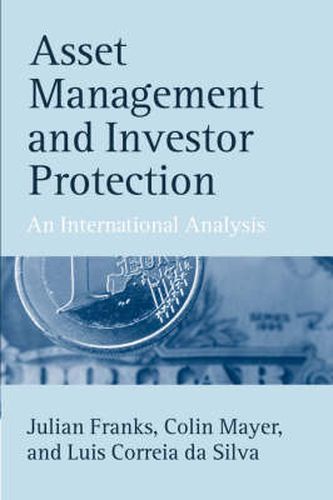Readings Newsletter
Become a Readings Member to make your shopping experience even easier.
Sign in or sign up for free!
You’re not far away from qualifying for FREE standard shipping within Australia
You’ve qualified for FREE standard shipping within Australia
The cart is loading…






Asset management is a major industry playing an increasingly important role in economic activity around the world. Asset managers provide services to individuals, governments, public agencies, banks, pension funds, insurance companies, and charities, to name a few. Traditionally, asset management has been primarily associated with the ‘stock market’ economies of the UK and the USA, but, as this book shows, some of the most spectacular growth in activity of recent years has occurred in Continental Europe. This has presented opportunities and challenges. New forms of financial instruments and institutions have emerged in countries that have traditionally relied on debt and non-market forms of intermediation. Competition has intensified, and entry has occurred both within and across national markets. However, this growth has been accompanied by potential problems: while investors enjoy a wider range of products and services, they face more complex instruments and transactions. Therefore, the potential for failures, such as misdealing and fraud, may have increased. The natural response is to strengthen regulation, but there is a fine balance to be struck between inadequate and excessive regulation of asset managers. This is particularly complicated in the context of European capital markets. European countries have traditionally had very different financial systems and asset management businesses, therefore it is no surprise to discover many different approaches to regulating asset managers. How should the European Commission respond to this diversity? Should it seek to create greater uniformity via common regulatory rules? The particular focus of this book is financial resource requirements. There is currently an active debate about the role capital requirements should play in asset management, particularly in the European context. In order to address this issue, the authors argue that it is necessary to understand the nature of the asset management business in different countries and the risks that it faces. They therefore discuss how the asset management business operates; how it is organized; the nature and size of risks in the business, who bears them, and how they are financed; and what the alternative forms of investor protection are, together with their associated costs and benefits.
$9.00 standard shipping within Australia
FREE standard shipping within Australia for orders over $100.00
Express & International shipping calculated at checkout
Asset management is a major industry playing an increasingly important role in economic activity around the world. Asset managers provide services to individuals, governments, public agencies, banks, pension funds, insurance companies, and charities, to name a few. Traditionally, asset management has been primarily associated with the ‘stock market’ economies of the UK and the USA, but, as this book shows, some of the most spectacular growth in activity of recent years has occurred in Continental Europe. This has presented opportunities and challenges. New forms of financial instruments and institutions have emerged in countries that have traditionally relied on debt and non-market forms of intermediation. Competition has intensified, and entry has occurred both within and across national markets. However, this growth has been accompanied by potential problems: while investors enjoy a wider range of products and services, they face more complex instruments and transactions. Therefore, the potential for failures, such as misdealing and fraud, may have increased. The natural response is to strengthen regulation, but there is a fine balance to be struck between inadequate and excessive regulation of asset managers. This is particularly complicated in the context of European capital markets. European countries have traditionally had very different financial systems and asset management businesses, therefore it is no surprise to discover many different approaches to regulating asset managers. How should the European Commission respond to this diversity? Should it seek to create greater uniformity via common regulatory rules? The particular focus of this book is financial resource requirements. There is currently an active debate about the role capital requirements should play in asset management, particularly in the European context. In order to address this issue, the authors argue that it is necessary to understand the nature of the asset management business in different countries and the risks that it faces. They therefore discuss how the asset management business operates; how it is organized; the nature and size of risks in the business, who bears them, and how they are financed; and what the alternative forms of investor protection are, together with their associated costs and benefits.